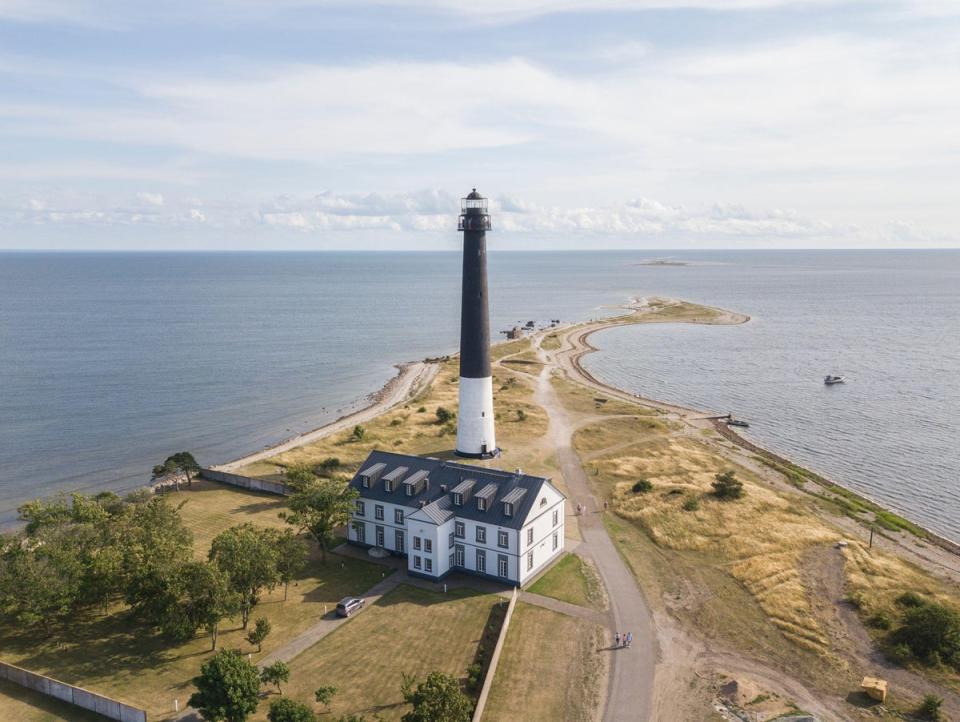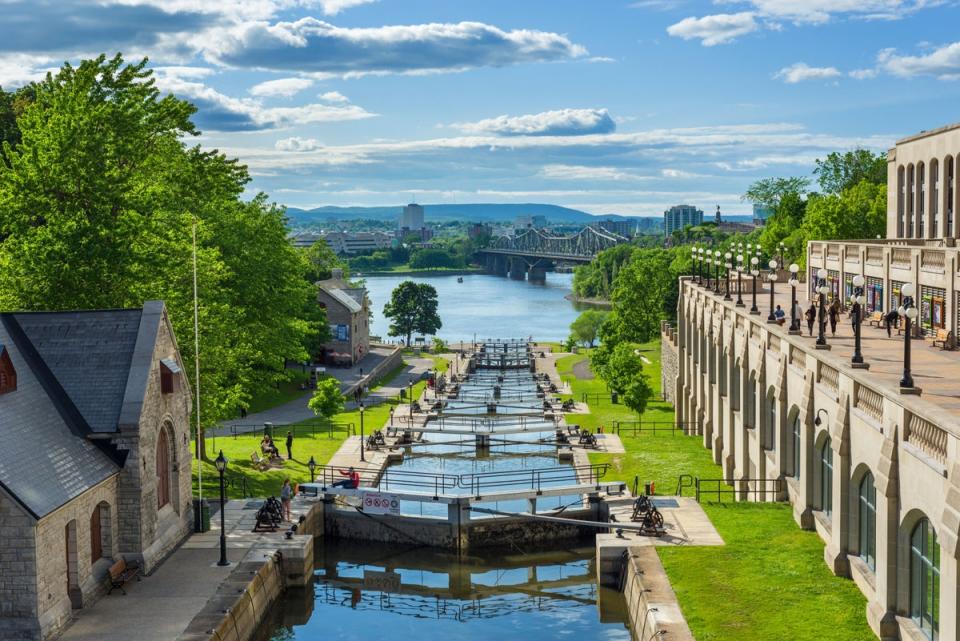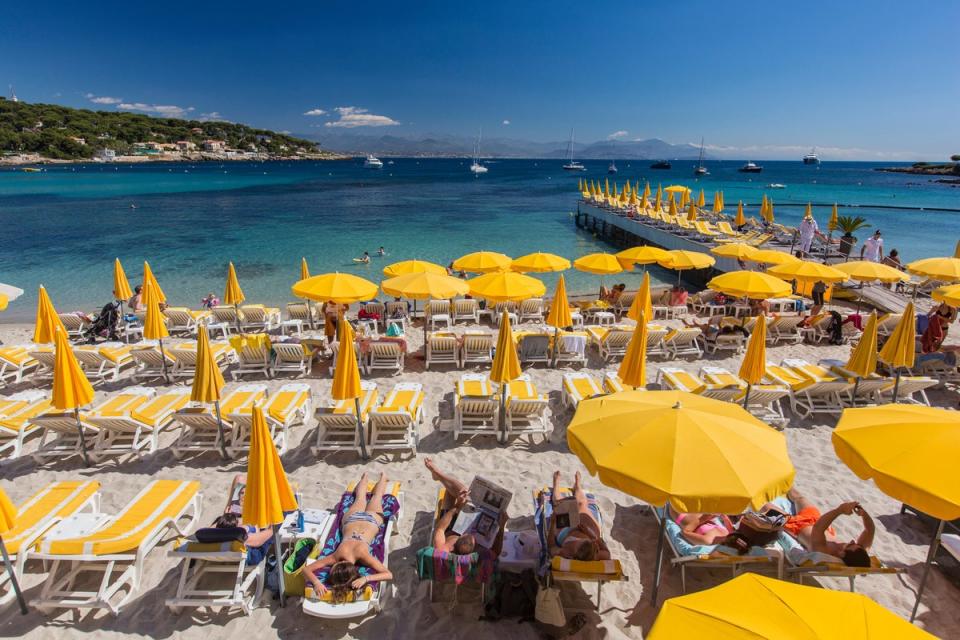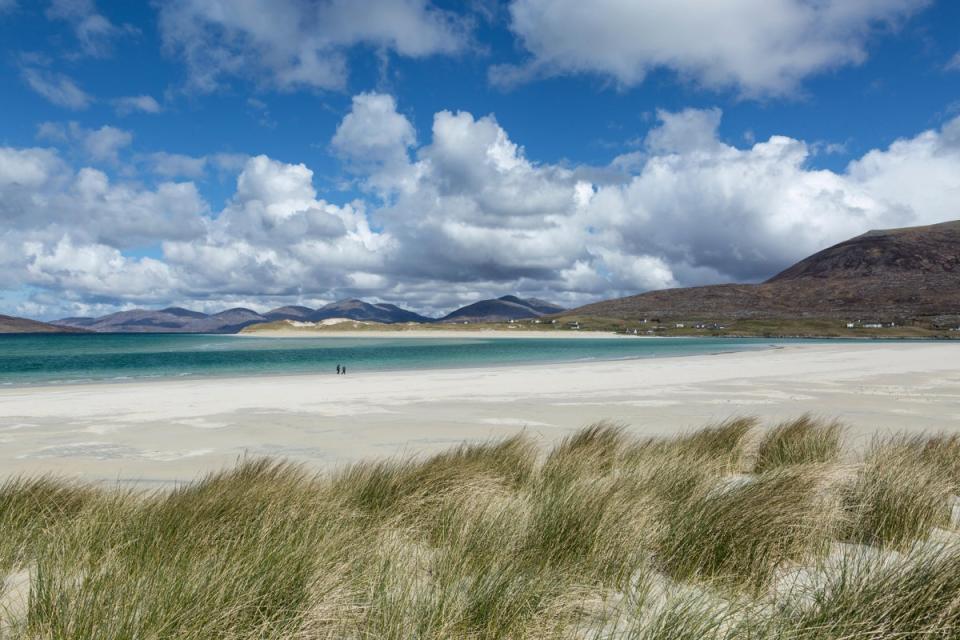“Travel is already being ruined by extreme weather,” says Alex Hawkins, strategic foresight editor at The Future Laboratory. “By 2033, the map could be completely redrawn. “We will have to broaden our horizons and be more creative about where, when and how we explore.” Europe experienced heat waves that reached a hot and humid 40 degrees last summer, barely dipping at night. Northern Ethiopia is currently facing a severe drought, while devastating floods are occurring in the south, just above the equator, and in Kenya and Somalia. In the Alps, last winter’s ski season was marked by sleet.
Higher temperatures are already affecting the decision-making of nearly 70 percent of travelers who say they are now reconsidering where they would traditionally go, according to a recent report by Marriott Bonvoy with The Future Laboratory. After analyzing the travel plans of 14,000 travelers across the continent and the Middle East, for the next three years, a quarter of us are already planning to travel at different times of the year and almost a third are considering cooler destinations to avoid the extremes . Hawkins suggests that destinations such as Scandinavia, Scotland and even the upper parts of Canada are emerging as more attractive. “Agriculture, and especially winemaking, is already following that trajectory, so travel is not far behind.”
Heat waves are already affecting our vacation choices, says Zoritsa Urosevic, executive director of the United Nations World Tourism Organization. “Climate change will lead to new emerging destinations and a change in perception of tourism,” she says. In the roaring twenties, when F Scott Fitzgerald and his love Zelda drank rosé in Antibes, the French Riviera was a winter destination. One wonders what the author of The Great Gatsby and his socialite wife could do with the time in his former villa, now the Belles Rives Hotel, in the height of summer in the hot 2020s.
“I have already seen the dramatic impact of 3°C higher temperatures in Greenland, with devastating consequences,” says Hjörtur Smárason, tourism development strategist and former CEO of Visit Greenland, the world’s largest island in the North Atlantic. “After two summers of wildfires and flooding across Europe, we are seeing numbers shift northwards. The Mediterranean will be the place to escape from in summer,” he says. Given that Arctic Lapland has already had summer days with temperatures above 30°C, he envisions the Baltic and Ukraine as future beach holiday spots, with Estonia’s islands dwarfing those of the Adriatic. “Denmark’s popular Lolland beaches already have investors lining up to build the sustainable beach hotels of the future; this could extend to Ukraine’s south-facing coasts, from Odessa to Mariupol,” Smárason predicts.


Meteorologists used to be able to forecast monsoon seasons, blizzards, and hurricanes. But as events such as the wildfire in Evros, Greece, this summer, the largest ever recorded in the EU, demonstrate, it is unpredictable. Dennis Schaal, of industry experts Skift, anticipates the classic holiday will become “inside-out or outside-in” as tourists look for indoor activities to replace outdoor ones in the heat. Off-season getaways will become the norm, while many trips will become more expensive. Schaal notes that Greece is increasing its hospitality tax, especially for luxury stays, “to generate a climate-driven disaster fund.”
Our cold weather getaways also need a rethink. Last January, ski resorts across Europe also experienced some of the highest temperatures ever recorded for that time of year, from Germany to the Czech Republic. Small resorts in France opened only for a month and, in the case of La Sambuy, near Trois Vallées, for the last time. In Canada, it was never cold enough for Ottawa’s Rideau Canal: the world’s longest naturally frozen skating rink was out of service for the first time in 52 winters. Canalside kiosk owners wait anxiously to see if it’s cold enough for skating in 2024.


Too hot. Very cold. Too much water. There is not enough water. Water Shortage is another disaster movie that will soon hit the travel scene near us. Falling river levels in Europe have forced cruises on the Danube and Rhine to be diverted throughout 2023. The recent drought in the French territory of Mayotte, off the east coast of Africa, shows us how a community island may be left completely without drinking water. Planning a holiday in the heat is thirsty work with all those spas, golf courses and pools to keep you satiated. The Center for Responsible Travel reports that the average tourist can use up to 10 times more H2O when out and about than local residents. Add agriculture to the mix, competing with tourism for this dwindling resource, and there will be problems ahead.
Jonny Bealby, of small group specialists Wild Frontiers, asks: “With more droughts, will water wars break out between countries bordering the world’s great rivers? Will melting ice caps and rising sea levels submerge some iconic tourist destinations forever? Will an increase in extreme heat and associated wildfires make travel to Australia, Greece and California unsustainable? With Cornwall’s climate rivaling that of Provence, will Provence feel like the Sahara?


Before you start hoarding tap water, adventure travel expert Bealby doubts this will work this decade. “If we look back to 2013, apart from the cost of travel, the only thing that has changed is the huge increase in travelers around the world.” What is certain is that prices will rise. “As insurance companies see greater risk, governments impose more green taxes on flights, and operators look to rebuild their balance sheets decimated during the pandemic, the cost of travel will rise.”
Could the side effect of rising international travel costs be a desire to travel the world digitally? “I’m not sure virtual will replace real travel; video didn’t kill the radio star,” says James Wallman, founder of the World Experience Organization. “But there is a big increase in immersion combined with nature. This shared and connected reality, unlike the virtual reality that separates us, is showing a pace of growth, and that is why Apple’s Vision Pro mixed reality headset and 5G will be a game-changer.” It’s hard to imagine that spending time in entertainment venues like Outernet London or Illuminarium in the United States will replace pleasant plazas and jungle peaks, but it could scratch an itch in the long run. “We were able to visit the Amazon via Tottenham Court Road, where the Pixel Artworks piece was interactive, fun, free and allowed us to catch a butterfly with our phones,” says Wallman. “By 2033, we could take a trip to a virtual Machu Picchu mixed with Manhattan and a roller coaster, or underwater Manhattan, which will hopefully remain a fantasy and not a climate crisis reality for the time being.”


There are good news. The cost of wind power has fallen 70 percent, the price of solar power has fallen 90 percent and a government report earlier this year cited that only 1 percent of the UK public opposes The renewable energies. Aviation, however, is taking longer than we would like to transition to green energy. For all the talk about sustainable aviation fuel, hydrogen energy, vertical takeoffs and landings, no big, large-scale changes are coming. And the super-rich hopping on private planes is especially uncomfortable in light of Oxfam’s latest report. Climate Equality: A Planet for the 99% highlights that the richest 1 percent in the world generates more emissions than the poorest 66 percent. Of these, the most disadvantaged are women and girls, indigenous peoples and the marginalized and the poorest. By 2033, will flying, let alone private jets, be considered socially unacceptable? Those who care about how the other half lives might want it banned, or at least restricted. Will we see frequent flyer programs continue to reward air travel? Or do loyalty points only exist for traveling by train? The good thing is that we will travel some “train-miles” on those summer night trains to the Baltic Riviera.
Tune in to Saturday’s The Standard: Sustainable Travel podcast to learn more about the green future of tourism. Find expert advice and sustainable travel tips at standard.co.uk/sustainable-travel